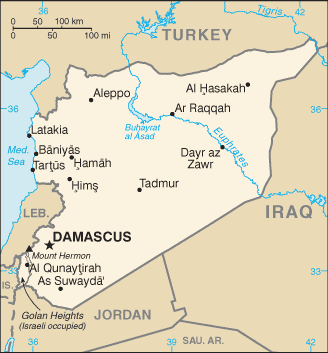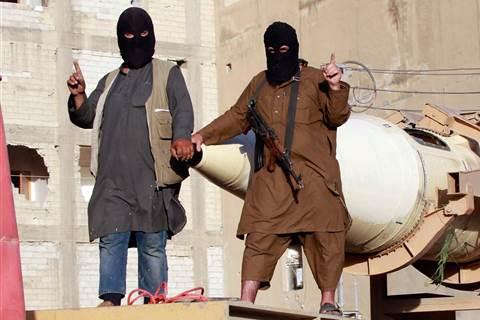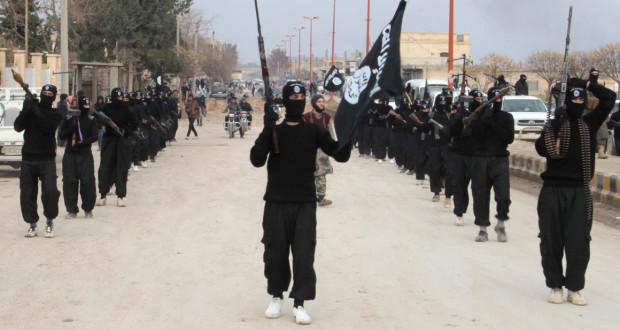http://www.zerohedge.com/news/2014-09-25/logistical-challenge-air-operations-syria
The Logistical Challenge Of Air Operations In Syria
Submitted by Tyler Durden on 09/25/2014 18:44 -0400
From Stratfor
The Logistical Challenge Of Air Operations In Syria
The composition of the force carrying out airstrikes in Syria highlights the logistical complexity of this kind of operation. Most of the U.S. aircraft taking part in the operations over northern Iraq and Syria are based in and around the Persian Gulf, meaning they are operating far from their origins. Bahrain, Jordan, Saudi Arabia, the United Arab Emirates and Qatar reportedly participated in the initial operations in Syria, adding further complexity and coordination issues.
While U.S. aircraft are spread around several bases in the region, the USS George H.W. Bush aircraft carrier, currently located in the Persian Gulf, has one of the highest concentrations of air assets. Carrier Wing 8 comprises 48 F/A-18 multirole aircraft as well as EA-6B Prowler electronic warfare aircraft. Elements of this strike force took part in the third wave of operations over Syria on Sept. 22. These carrier-based aircraft would have been operating more than 850 miles from their point of origin, which is beyond their combat radius.
This extended range makes aerial refueling assets necessary to conduct operations in Syria, just as they have been for operations over northern Iraq in recent weeks. These assets can extend the operational range of aircraft significantly. Yet, the dependence on aerial refueling tanker aircraft for the execution of these airstrikes is a major constraint. U.S. sources have already hinted at a lack of capability for aerial refueling, and Washington has called upon its allies to assist in building capacity for ongoing operations. Previously, when airstrikes were still limited to northern Iraq, aerial refueling aircraft enabled other aircraft to conduct long-range combat patrols and surveillance flights in a third of the air sorties conducted.
With U.S. allies in the region taking a more active role in the airstrikes, the prospect of flying more U.S. aircraft from bases in Gulf countries increases. Along with the possibility of using Turkish air bases, the potential to deploy air assets from locations in neighboring countries would simplify the logistics that go into running long-range combat patrols and airstrikes assisted by aerial refueling. A further problem to overcome, however, is the obstacle of domestic politics and the potential for regional friction as a result of involvement in a U.S.-led air campaign.
Anti War......
ISIS Surrounds Another Iraqi Army Camp in Anbar: 200 Trapped
Troops Cornered Just South of Ramadi
by Jason Ditz, September 24, 2014
Despite the addition of US airstrikes complicating their operations, ISIS continues to have the advantage on the ground in Iraq, and for the second time in less than a week has cornered a large camp full of Iraqi soldiers.
 Over the weekend, ISIS overran the Saqlawiya base, near Fallujah, killing 40 soldiers and capturing 70 others in an offensive that led over 100 trapped soldiers to flee into the countryside. This time, the troops are trapped at a base just south of Ramadi.
Over the weekend, ISIS overran the Saqlawiya base, near Fallujah, killing 40 soldiers and capturing 70 others in an offensive that led over 100 trapped soldiers to flee into the countryside. This time, the troops are trapped at a base just south of Ramadi.
“There was an army group in front of us whom ISIS destroyed completely six days ago,” reported one soldier from inside the camp. ISIS has surrounded the site and mined the roads to prevent more Iraqi forces from reaching them.
This was the same strategy in Saqlawiya where, after wearing out the out-of-supply soldiers, they launched a suicide attack that sparked a panic and picked off the troops along the roads, capturing large numbers.
200 soldiers are believed to be in the Albu Etha camp, and they report that they have begun to run low on food and ammunition. Despite Iraq’s claims of progress against ISIS since the US strikes began, the losses seem to be mounting.
US Airstrikes in Syria Don’t Slow ISIS Offensive
ISIS Continues to Press Into Kurdish Area
by Jason Ditz, September 24, 2014
US and coalition airstrikes continue to pound ISIS in Syria, with the latest attacks focusing on ISIS fighters advancing into the Kurdish area around Ayn al-Arab in northern Syria.
 Despite that area being the new focus of the airstrikes, the attacks do not appear to be slowing ISIS even a little, as the group continues to press ahead into more Kurdish villages, and civilians continue to flee into neighboring Turkey.
Despite that area being the new focus of the airstrikes, the attacks do not appear to be slowing ISIS even a little, as the group continues to press ahead into more Kurdish villages, and civilians continue to flee into neighboring Turkey.
“Those air strikes are not important,” noted one of the refugees, who called for US troops on the ground to retake the villages for the Kurdish factions there.
The ISIS battles with Syrian Kurds seem to be a major source of pressure for US involvement in Syria, with influential Kurdish factions trying to paint Ayn al-Arab with the same false narrative of humanitarian calamity as Mount Sinjar, which was the initial pretext for the US attacks in Iraq.
In Iraq, the US airstrikes are being done nominally to aid Kurdish fighters on the ground, and that’s had little success either. Officials continue to insist the US isn’t considering ground operations, though they continue to escalate the war in ways that are adding to pressure to commit boots on the ground, pointing to a lack of planning or an intention to eventually renege on the promise of no ground troops.
Syrian Govt Minister: US Strikes Going ‘In the Right Direction’
Syrian Army Aims to Take Advantage of US Attacks on ISIS
by Jason Ditz, September 24, 2014
Though Syrian officials had previously expressed opposition to US airstrikes on their territory, Reconciliation Minister Ali Hayder today said the government believes the strikes are going in “the right direction.”
 Though there wasn’t official “coordination,” Syrian officials reported that they were given advanced notification of the US attacks, and the attacks didn’t hit any Syrian military targets, only ISIS and al-Qaeda factions.
Though there wasn’t official “coordination,” Syrian officials reported that they were given advanced notification of the US attacks, and the attacks didn’t hit any Syrian military targets, only ISIS and al-Qaeda factions.
All in all, the strikes have worked out pretty well for the Assad government, allowing them to focus their own military strikes on targets closer to Damascus while the US points rebels in the north.
Not that they’re letting the US strikes in the north go to waste. The US may not have allies on the ground to follow up on their airstrikes, but the Syrian military has reportedly hit targets in Aleppothemselves in follow-up strikes on the US attacks.
The US has tried to present the war as part of a move to eventually force regime change in Syria, creating a new, pro-US rebel force that will eventually take on Assad. Yet in the meantime, the strikes seem to be benefiting no one so much as the Assad forces themselves.
Syrian Rebels Slam US: Strikes Hitting al-Qaeda, Not Assad
US Attacks Driving al-Qaeda Out of Northwest Syria
by Jason Ditz, September 24, 2014
Syrian rebels are expressing growing anger about the way the US airstrikes in Syria have gone, complaining that not only did the US not strike Syrian military targets, but that they also attacked al-Qaeda’s Khorasan group.
 That’s not the US intervention the rebels thought they were signing on for, and they warned that the US targeting of al-Qaeda’s Jabhat al-Nusra and its compatriots is doing serious damage 5to “moderate” rebels.
That’s not the US intervention the rebels thought they were signing on for, and they warned that the US targeting of al-Qaeda’s Jabhat al-Nusra and its compatriots is doing serious damage 5to “moderate” rebels.
The Nusra Front and other Islamist factions have been withdrawing their heavy weapons from northern Syria, particularly the tenuously held Idlib Province, saying they don’t want to be targeted. That’s likely to give Assad forces an opening to retake more lost ground.
The level to which the Free Syrian Army and other factions backed by the US depend on al-Qaeda and ISIS underscores the complexity of the US air war. It’s also likely to fuel more anger from the “pro-US” rebels because the air war really is helping the Assad government on the ground.
Tweets.......
In interview with @TurkeyPulse, top PKK commander says group ready to resume open war with #Turkey - @amberinzaman http://almon.co/281z
Musings On Iraq Premier Abadi Retires Two Of Iraq’s Top Generals, But Members Of Parliament Wants Them Prosecuted http://musingsoniraq.blogspot.com/2014/09/premier
#US lead war against #ISlamicState in #Syria & #Iraq costs ~300 million$/month -every airstrike 40.000$ -every Tomahawk missile 1.6 million$
A Look Inside The Secret Deal With Saudi Arabia That Unleashed The Syrian Bombing http://www.zerohedge.com/news/2014-09-25/look-inside-secret-deal-saudi-arabia-unleashed-syrian-bombing …
Moon of Alabama retweeted
The Khorasan Group is kind of like the Kardashian Group. They became famous even though they've never done anything.
US Propaganda Enters Into Insane, Irrational Overdrive In Attempt to "Sell" War In Syria http://www.zerohedge.com/news/2014-09-24/us-propaganda-enters-insane-irrational-overdrive-attempt-sell-war-syria …
Turkish President says the world is not doing enough to stem the flow of foreign fighters to Syria #truestory http://www.hurriyetdailynews.com/turkish-president-erdogan-says-world-not-doing-enough-against-foreign-fighters.aspx?pageID=238&nID=72149&NewsCatID=359 …
Suqor al-Sham (big #Idlib presence) has condemned US-led strikes in #Syria as tool for fuelling terrorist recruitment
[The now sidelined] Supreme Military Council (SMC) condemns US-led strikes in #Syria as only benefiting the regime:
Ahrar al-Sham political official Abu Omer condemns US-led strikes in #Syria & denies any reports that Ahrar was hit: http://eldorar.com/node/60277
France carries out fresh round of air strikes in Iraq http://ara.tv/4av5t
MAP: Ain al-Arab on the Brink
guido olimpio retweeted
ISIS execute lawyer & human rights defender Samira Saleh Al-Naimi in a public square http://gc4hr.org/news/view/758 #RIP
RT retweeted
‘Don't bomb Iraq & Syria!’ Stop the War to protest at Downing Street http://on.rt.com/ikwszs @STWuk
Syria Deeply retweeted
Our staff are attending to the desperate needs of Syria's newest refugees in Turkey
http://trib.al/ijTDNZp
New from Centcom: 13 airstrikes on 12 ISIL-targets located in eastern #Syria around Al Mayadin, Al Hasakah, &Abu Kamal;& 1 near Deir al-Zour
IS appears to be on the offensive at Baiji Refinery Dujail in Salahaddin Central Anbar & Sensl in Diyala
The U.S.-led campaign's new tactic against ISIS tops our summary of the news to know today. http://cbsn.ws/1pepOT5
Alexblx retweeted
pic.twitter.com/CI0nG4HJ1I YPG press statement claiming US airstrikes have failed to target #ISIS bases around #Kobane and questions US efforts


 Al-Monitor
Al-Monitor 
 NBC News
NBC News 










 Al Arabiya English
Al Arabiya English 


 kristyan benedict
kristyan benedict 
 RT UK
RT UK 
 UN Refugee Agency
UN Refugee Agency 


 Yvo Fitzherbert
Yvo Fitzherbert 
No comments:
Post a Comment